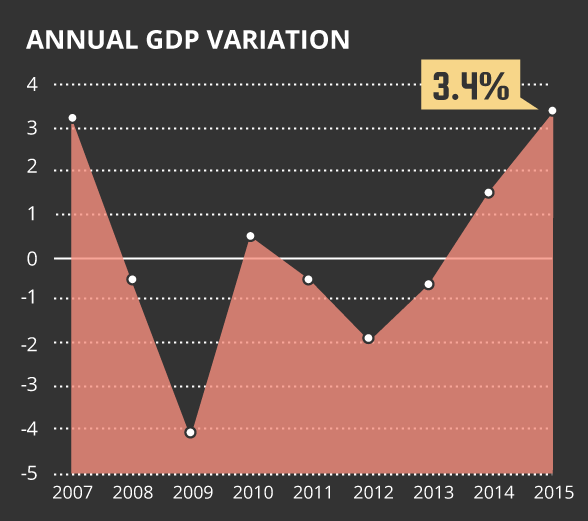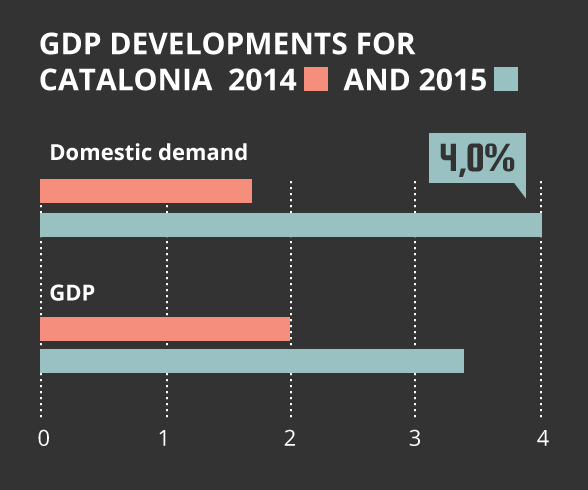Catalan economy records 3.4% GDP growth at 2015, the highest since the crisis
In 2015, Catalonia's gross domestic product recorded an annual growth of 3.4% to 214,9 billion euro, according to data released by the Catalan Statistical Office (Idescat). This increase allows the Catalan economy to return to growth rates not seen since 2007. Catalonia's growth is above that of Spain (3.2%) and the euro area average (1.6%).
Economic dynamics have shown a progressive improvement during the year, with year-on-year growth increasing from 2.8% in the first quarter to 3.9% in the fourth quarter. Growth in the fourth quarter exceeds that of the Spanish economy (3.5%) and the euro area (1.6%). And, compared with the previous quarter, Catalan GDP rose by 1.0% during the fourth quarter of 2015.
Consumption and investment growth is accelerating
Domestic demand highlights the upward trend of 2014, reaching a yearly growth rate of 4.0% in 2015. This can be mainly attributed to an increase in household consumption expenditure. Furthermore, in relative terms, the growth rate in gross capital formation (5.7%), particularly through investment in capital goods (6.4%), should be emphasized, for its expected positive link with labour productivity. Investment in construction recorded positive growth (3.1%) for the first time in eight years. At the same time, government consumption expenditure rose by 3.3%.
The contribution of the external balance to GDP growth was positive in 2014, but recorded -0.1 percentage point in 2015. However, the contribution of foreign trade (-0.5 percentage points) was less negative than the previous year (-0.8%), thanks to the good performance of exports of goods and services, which increased 4.8%. Still, import growth was higher (7.3%), driven by the developments in domestic demand and industrial production.
On the supply side, GDP in 2015 reflects an overall improvement of the economic activity, with the services sector playing a leading role (3.6%). The industrial sector grew by 2.7%, mainly thanks to the contribution of the food, chemistry, plastic and metal products branches. Finally, the construction sector made significant progress during 2015 (3.4%), after seven years of decline, on the basis of information available on residential building, civil works and employment.






